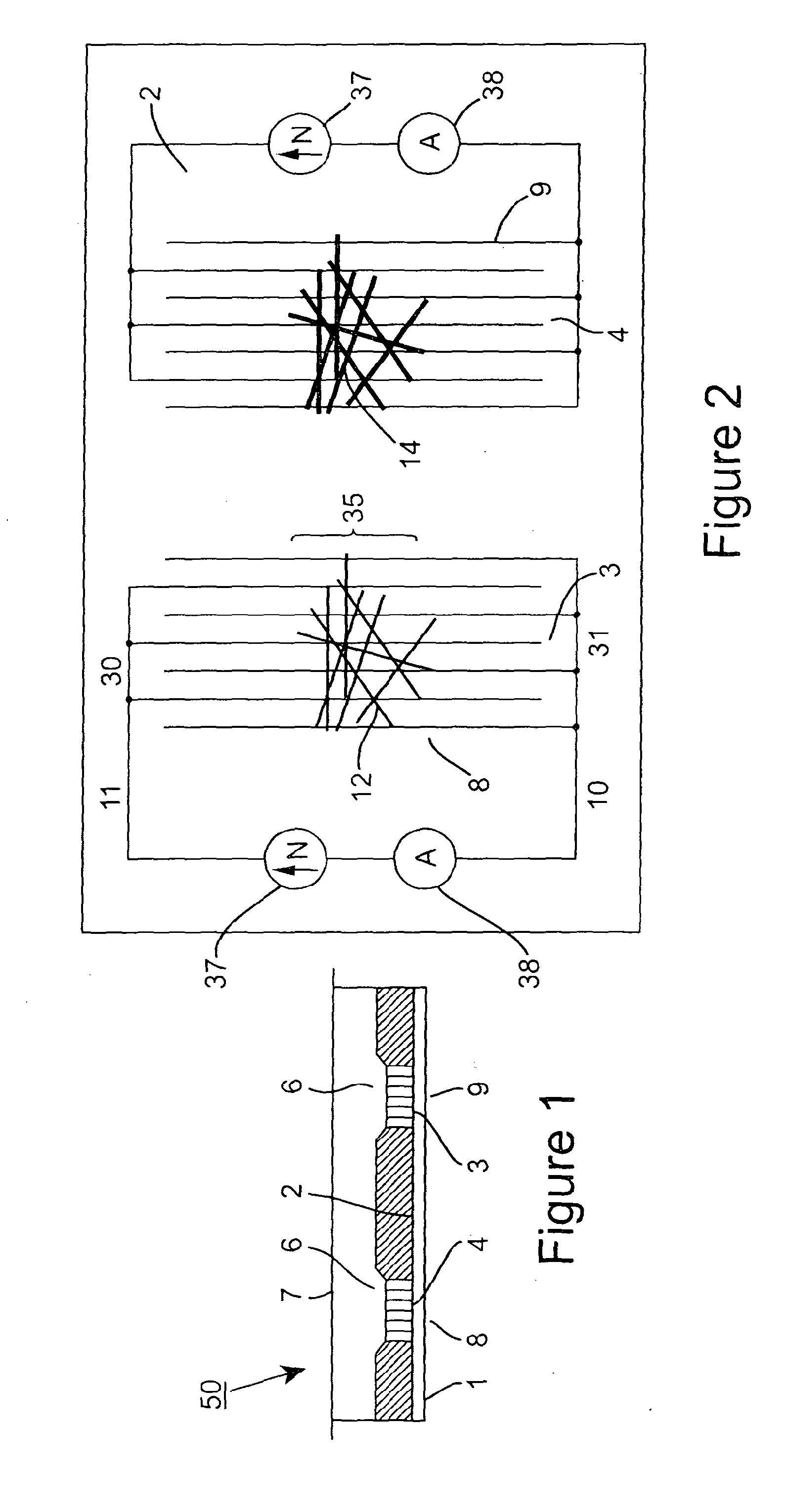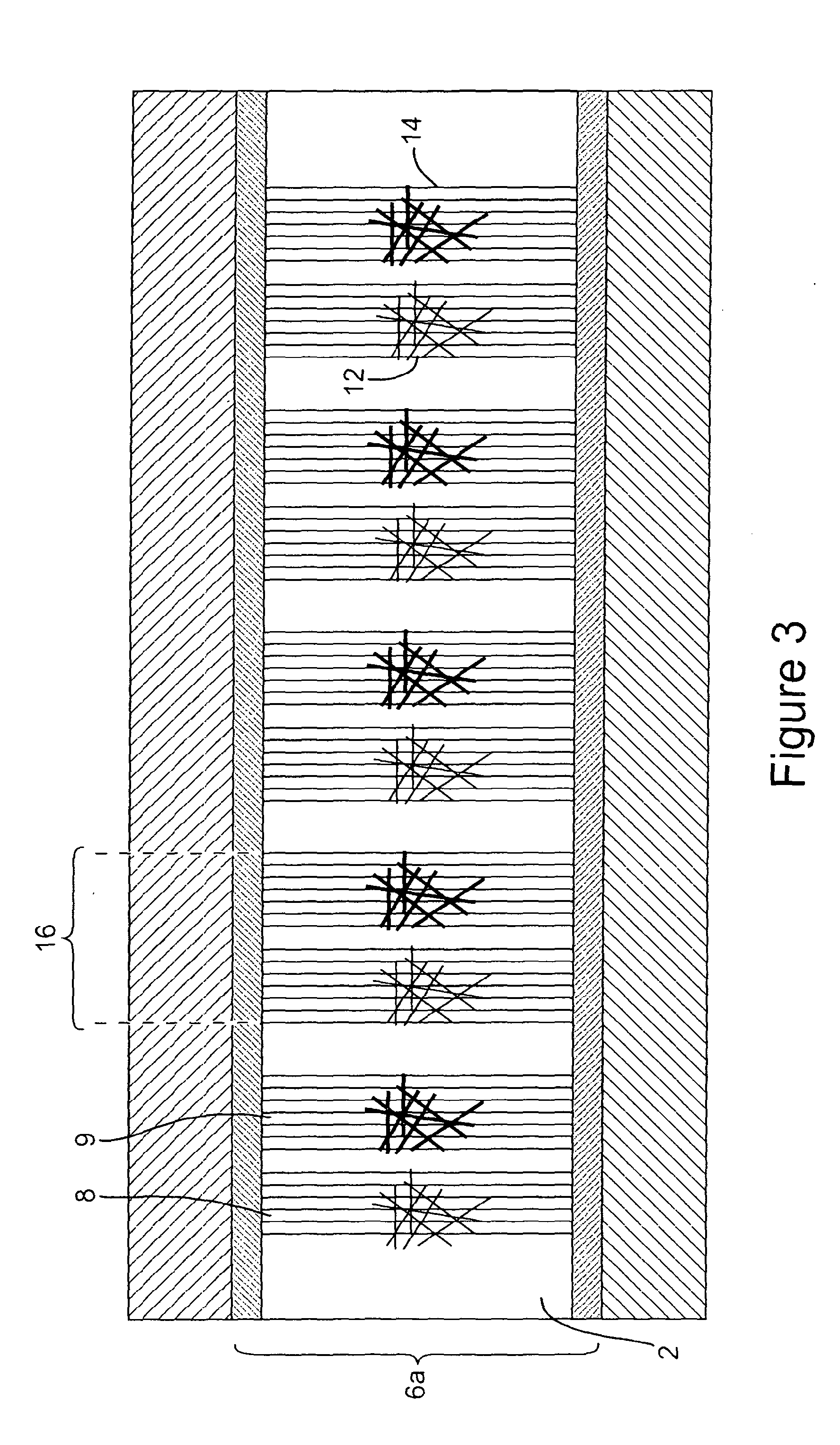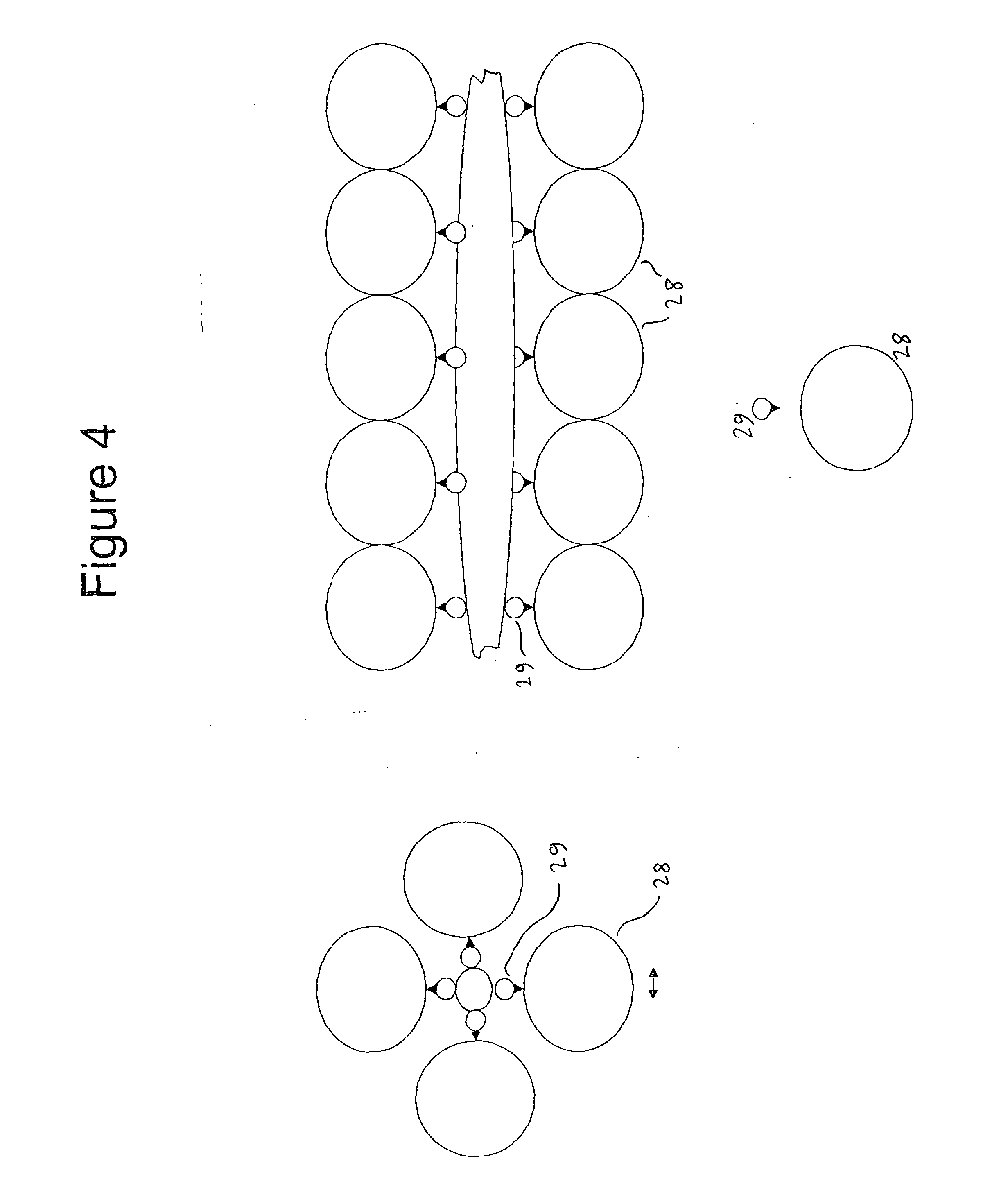Aptamer Coated Measurement and Reference Electrodes and Methods Using Same for Biomarker Detection
a technology of reference electrodes and aptamer coating, which is applied in the direction of biochemistry apparatus, combinational chemistry, chemical libraries, etc., can solve the problems of difficult to provide the conditions described previously for successful testing, equipment and highly trained staff, and it is not usually possible to carry out such complex tests in close proximity. , to achieve the effect of rapid and reliable disease detection and increased sensor reliability
- Summary
- Abstract
- Description
- Claims
- Application Information
AI Technical Summary
Benefits of technology
Problems solved by technology
Method used
Image
Examples
example 1
CNTs / Deprotected (GT)10 Thrombin Aptamer
[0144]Frozen protected (GT)10 thrombin was defrosted at room temperature. 100 microlitres of this solution was diluted in 900 microlitres of PBS to give an approximate concentration of (GT)10 thrombin of 1.2 mg / ml. The solution was incubated at 90° C. for 2 min and cooled down slowly at room temperature to ensure that all the oligomers were base paired before dispersion.
[0145]0.6 mg of nanotube powder from Nanointegris was placed into 2 ml of PBS and sonicated using ultrasonic probe for 80 min at 15 W. The CNTs dispersion was sonicated in ultrasonic bath for 30 min prior to mixing with DNA. 1 ml of the (GT)10 thrombin solution was added to the nanotube dispersion and sonicated in ultrasonic bath. PBS was then added to the dispersion (3 ml) until the dispersion reached the required nanotube concentration. This process resulted in DNA:SWNT w / w of cDNA:0.2 mg / ml, cCNTs:0.1 mg / ml.
[0146]The dispersions were sonicated vigorously in ice water causing...
example 2
CNTs / Protected (GT)10 Thrombin Aptamer
[0151]The electrode was made as described in Example 1. However, the protecting group was left in place so that the final devices consisted of a network of nanotubes covered in the protected thrombin aptamer. This electrode is the “reference” electrode.
[0152]FIG. 15 shows the current between the main electrodes (ID) as a function of gate voltage (VD). As with the deprotected electrode, a semiconducting behaviour was observed. In this device, an electrode made by CNTs is functionalised by protected (GT)10 thrombin aptamer. Measurements were made after drying. Measurements were made after drying. The current between the electrodes (I, left axis, dark line) as a function of gate voltage (V). (The right hand axis and light line denote the absolute current (ABS(I)).)
example 3
Comparison of the Response of the Reference and Measurement Electrodes
[0153]Measurement electrodes were produced as described in Example 1 and reference electrodes were produced as described in Example 2. The electrical characteristics of the electrodes were measured (FIG. 16). 100 nM thrombin was then introduced to the electrodes, allowed to dry and the electrical properties were measured again (FIG. 17). No significant change was observed in the reference electrode after the introduction of the thrombin, whereas in the “measurement” electrode, the current increased by a factor of ˜4 at 2 V drain voltage.
[0154]FIG. 16a shows the as-made reference electrode (nanotubes functionalised by protected (GT)10 thrombin aptamer) and FIG. 16b shows the as-made measurement electrode (nanotubes functionalised by deprotected (GT)10 thrombin aptamer). Measurements were made after drying. The current between the electrodes (left hand axis, “I”, dark line) is plotted as a function of gate voltage (...
PUM
| Property | Measurement | Unit |
|---|---|---|
| thickness | aaaaa | aaaaa |
| width | aaaaa | aaaaa |
| thick | aaaaa | aaaaa |
Abstract
Description
Claims
Application Information
 Login to View More
Login to View More - R&D
- Intellectual Property
- Life Sciences
- Materials
- Tech Scout
- Unparalleled Data Quality
- Higher Quality Content
- 60% Fewer Hallucinations
Browse by: Latest US Patents, China's latest patents, Technical Efficacy Thesaurus, Application Domain, Technology Topic, Popular Technical Reports.
© 2025 PatSnap. All rights reserved.Legal|Privacy policy|Modern Slavery Act Transparency Statement|Sitemap|About US| Contact US: help@patsnap.com



